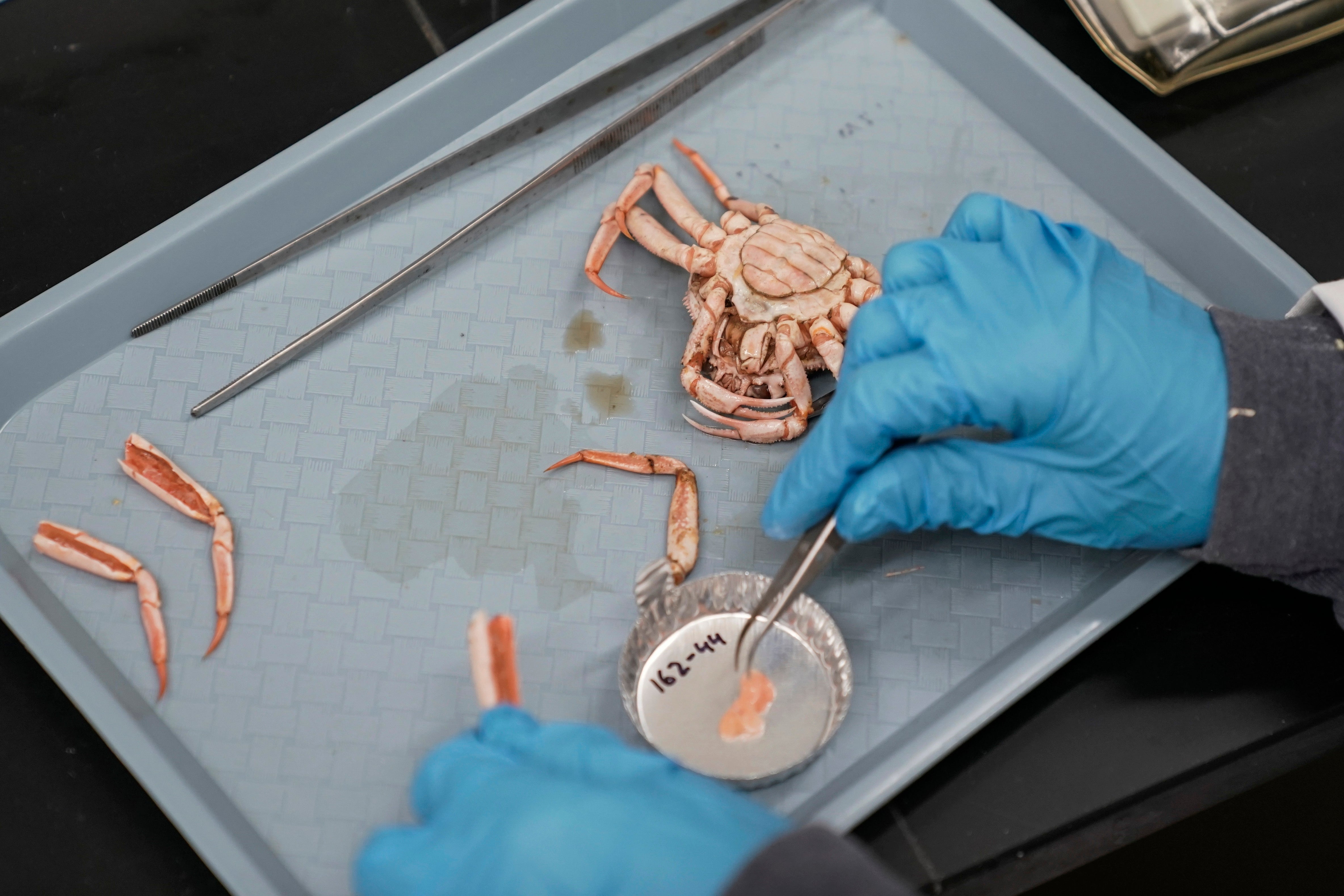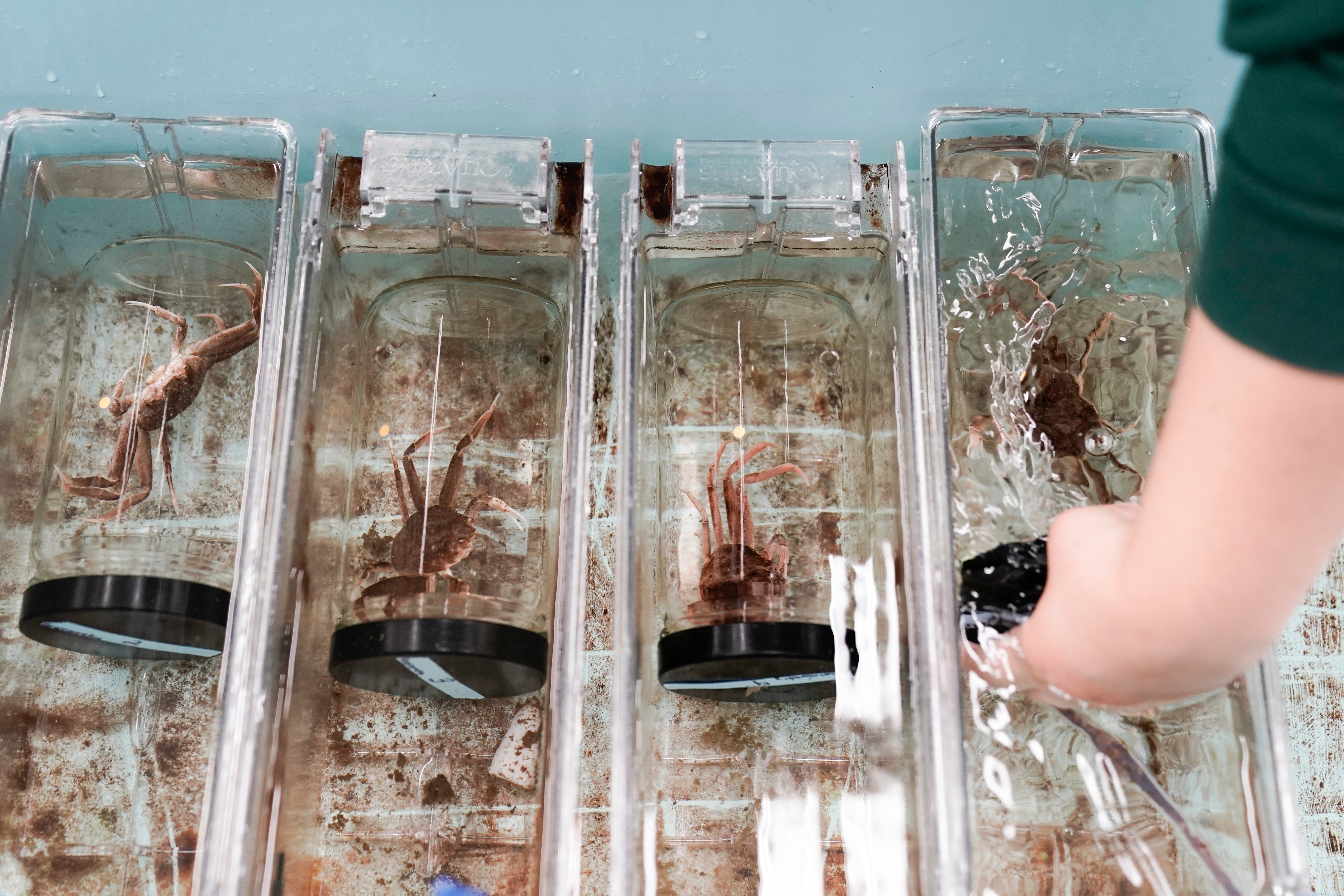Scientists reveal why billions of crabs vanished from Alaska
Ten billion crabs have died in recent years – but what caused it?
Your support helps us to tell the story
From reproductive rights to climate change to Big Tech, The Independent is on the ground when the story is developing. Whether it's investigating the financials of Elon Musk's pro-Trump PAC or producing our latest documentary, 'The A Word', which shines a light on the American women fighting for reproductive rights, we know how important it is to parse out the facts from the messaging.
At such a critical moment in US history, we need reporters on the ground. Your donation allows us to keep sending journalists to speak to both sides of the story.
The Independent is trusted by Americans across the entire political spectrum. And unlike many other quality news outlets, we choose not to lock Americans out of our reporting and analysis with paywalls. We believe quality journalism should be available to everyone, paid for by those who can afford it.
Your support makes all the difference.Billions of snow crabs have gone missing from the ocean around Alaska in recent years, with the reason for their disappearance leaving many perplexed.
But, now, scientists have finally got to the bottom of the mystery.
New research from scientists at the National Oceanic and Atmospheric Administration (NOAA) finds that climate change has led to the demise of more than 10 billion snow crabs, with heatwaves in the Bering Sea leading to mass starvation of the creatures.
The study finds that their disappearance was caused by marine heatwaves in the sea during 2018 and 2019, which are thought to have originated from human activity.
While the temperature of the water was not too hot for the crabs’ thermal limit, it is believed to have led to a rise in the crabs’ calorific intake – meaning a total collapse of the population as many crabs could no longer get enough food that they needed.
Their “disappearance” began around 2021 when the numbers of crabs reached its lowest since the survey began in 1975.
“When I received the 2021 data from the survey for the first time, my mind was just blown,” Cody Szuwalski, lead author of the study and fishery biologist at NOAA, told CNN.
“Everybody was just kind of hoping and praying that that was an error in the survey and that next year you would see more crabs.
“And then in 2022, it was more of a resignation that this is going to be a long road.”
The cold water species had found themselves in a warmer habitat, bringing with it new predators.
The report revealed that Pacific cod swooped down and ate what was left of the helpless crabs, who normally feed on much smaller crab species.
The collapse only happened around three years after a gold rush period, where there was a “historical high” abundance of crabs in the region.
While the dwindling of another species due to climate change is tragic on its own, their disappearance has also severely impacted the local fishing communities in Alaska.

For the second year in a row, the Alaskan harvesting season of the crab was cancelled due to the extremely low population levels.
The fishing year only operates within a small window from 1 to 30 June each year as it is.
The research shows that Alaskan fishing is a billion-dollar industry with the fisheries being some of the most “productive” in the world, producing around 5.27 billion tons of seafood in 2021.
However, after the collapse, communities have already started to feel the impact of the decreasing harvests.
Saint Paul Island, for example, is a rural community in Alaska which relies strongly on the revenue produced from fishing snow crabs.
As a result of the fishery closure for the year, Saint Paul declared a cultural, economic, and social emergency, according to NOAA.
Sea surface temperatures have warmed an average of 0.14 degrees Farenheight per decade since 1901, with the past three decades showing a dramatic increase.

Scientists also have found that arctic temperatures have warmed four times faster than the rest around the Earth.
“Climate change is really throwing a wrench into our plans, our models and our management systems,” Mr Szuwalski told CNN.
While the biologist admitted that climate change would change the lives of many fishing communities, he did not expect it to happen as soon as it has.
“This was kind of an unexpected, punctuated change in their populations,” he told the outlet.
“But I think long term, the expectation is that the snow crab population will move north as the ice recedes and in the eastern Bering Sea, we probably won’t see as much of them anymore.”
The NOAA is looking into ways to diversify fishing industries and distribute disaster relief funds to communities in light of the issue.

Join our commenting forum
Join thought-provoking conversations, follow other Independent readers and see their replies
Comments